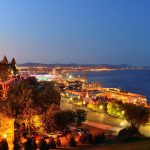
Moscow is the greatest city in the world’s greatest stretch of flat land. Alternatively known as the eastern reaches of the Northern European Plain, the Eurasian steppe or – as I call it – the Hordelands, Central Eurasia is 3,000 miles of wide-open spaces from end-to-end.
Controlling this zone of territory is a nightmare. There are no truly useful rivers to bring down transport costs or generate capital. Some of the land is fertile, but climatic conditions are hostile: winters are beyond harsh, rainfall is fickle, and even if a good crop can be gleaned, it still needs to be laboriously transported.
Successful rulership here requires a healthy – or unhealthy, depending on your politics – degree of intimidation. Freedom leads to, among other things, people concentrating their wealth near them. This cannot stand. Russia must forcibly redistribute to prevent famine and to guard the Hordelands’ massive borders.
Fear requires symbols, paranoia, monuments, and structures that inspire imposing awe. Few in human history are better at this than the Red Square complex and particularly St. Basil’s Cathedral. They are synonymous with Russian power.
For more on the challenges and ultimate fate of Russia, see Chapter 10 of The Accidental Superpower.



